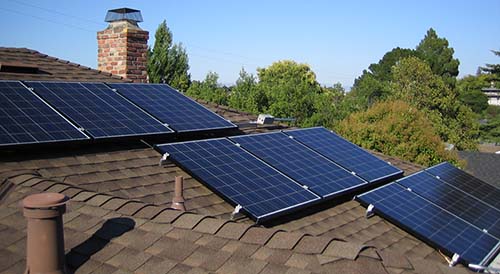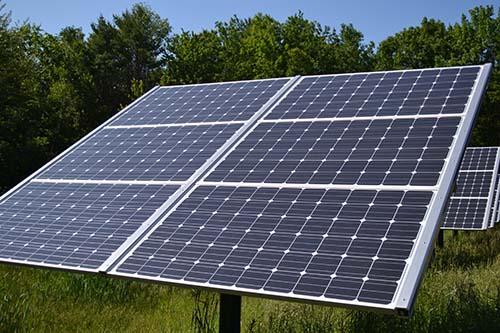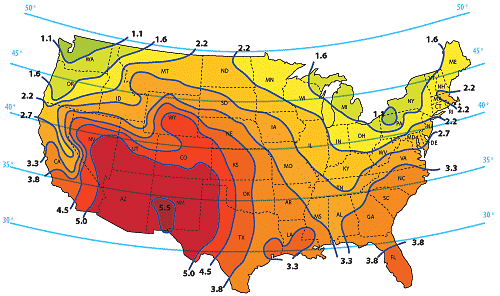 Loading... Please wait...
Loading... Please wait...Products
- DC Appliances
- Solar Refrigerators and Freezers
- Solar Panel Kits
- Solar Panels
- Solar Generators
- Inverters
- Inverter Monitoring
- Inverter Accessories
- Balance of Systems
- Racking and Mounting
- Rails
- Flashings
- Splice Kits
- Stopper Sleeves
- Conduit Mounts
- Attachments
- Brace Assembly
- Base Mount
- Brackets
- Bolts
- Clamps
- Caps
- L-Feet
- Washers
- Skirt
- Lugs
- Tilt Legs
- Hooks
- Stand-Offs
- Ballast Bay
- Top of Pole Mount
- Side of Pole Mount
- Flush Mount Kits
- Ground Mount Kits
- Roof Mount Kits
- Hardware Packages
- Wire Management
- Batteries
- Battery Accessories
- Charge Controllers
- Tools and Supplies
- View All Products
Solaris Blog - Home Solar Application
Getting Started with Solar for Your Home
Posted by Brandi Casey on 28th Feb 2017

*Roof Top Solar Array
As the cost of solar arrays continues to decrease, home solar systems have become more obtainable for many homeowners. Furthermore, the affordable cost offers a great ROI over the lifetime of the system and offsets the ever-increasing electricity costs in the United States. However, beginning research on solar applications can be overwhelming to even a seasoned DIY'er due to the number of choices. The most important place is to know where to start, and moving forward from there.
The first step to any successful solar installation is sizing your system properly. Take a minimum of 6 months or the preferred 12 months of your electricity bill and find your average kilowatt hours per month usage. Average your kilowatt hours per month by adding all the totals and dividing the number by the number of months you are considering, this will provide your average kilowatt hour per month. Take this number and divide it by 1000 to see your recommended kilowatt system.
Example
Month One: 4523 kwh
Month Two: 4728 kwh
Month Three: 4392 kwh
Month Four: 4230 kwh
Month Five: 4523 kwh
Month Six: 4956 kwh
Total:27,352 kwh / 6 Months = 4,558.68kwh
4,558.68 kwh/1000 = 4.56 or 4.6Kw System
The example above shows a homeowner that would benefit from a 4.6Kw system, it is recommended to size up instead of down to get the most coverage over your high usage months. The next step is to begin putting together the pieces of your system starting with the solar panels. It is important to select high quality panels, not only will this improve the life and energy output of your system, tier one solar panel manufacturers undergo rigorous testing on their panels to withstand extreme weather conditions, electrical specifications, and adhere to fire regulations.
A few well known and high quality manufacturers include: SolarWorld, Canadian Solar, Trina Solar, Hanwha Q Cells, LG, Panasonic and Suniva. These are by no means the only solar manufacturers with a long
history and high quality modules. They are, however, among the most popular
brands and have industry leading efficiency ratings. For some homeowners
purchasing American Made solar panels is important, while others focus their
importance on high efficiency, and others look for quality and a low cost.

*Fixed Tilt Solar Array
For American Made panels, SolarWorld and Suniva are the panels that most homeowners will select. Both manufacturers have a strong history in the renewable energy industry and manufacture the majority if not all of their panels in the United States. Due to the high demand for their panels, the panels may have a lead time for delivery, and often are more expensive than some of the other panels listed here. However, due to their high quality they remain popular brands for many residential and commercial applications.
For those looking for the highest efficiency panels, one
need not look any further than well-known brands such as LG and Panasonic. Both
have modules that exceed most industry standards in efficiency, homeowners will
often pay a much higher cost for modules with similar wattages. However, if you
live in an area with low irradiance, or are planning on completely
disconnecting from the grid, the extra cost of the panels will make up for
itself overtime.

*United States Solar Irradiance Map
Finally, for those looking for a lower cost and high efficiency, Canadian Solar, Trina Solar and Hanwha Q Cells are excellent choices. Each brand is well established in the solar industry, and are consistently increasing their brands cell technology. For example, Canadian Solar has recently released a line of low irradiance panels that allow for higher efficiency for areas with lower solar radiation such as Michigan and Washington. The new technology makes a higher ROI more obtainable and affordable for homeowners in these areas.
All in all, selecting the best solar module typically comes down to preference. Solar panel manufacturers each have their own technology that makes their solar panels operate in a unique manner. Without knowing the size of the system that you need, or the type of module that you are looking for, it becomes difficult to pinpoint the type of system that will work best for you. By following these simple steps, you can start your solar installation off strongly and ultimately, install a system that will provide you with clean energy for decades to come.



